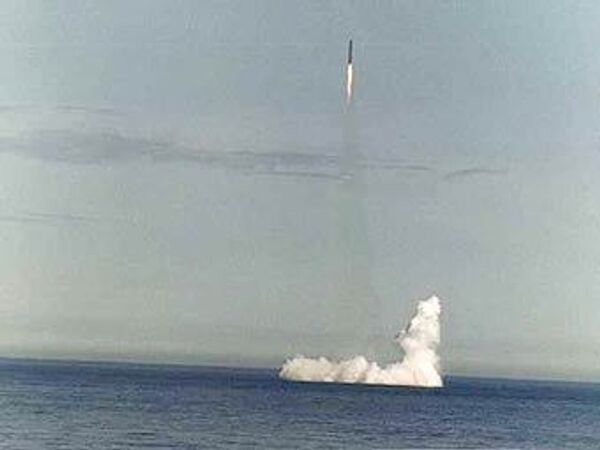MOSCOW, October 26 (RIA Novosti) - The latest failure of the Bulava submarine-launched ballistic missile (SLBM) was caused by a defective steering system in its first stage, a defense industry source said on Monday.
The troubled Bulava was test-fired from the Dmitry Donskoi submarine in the North Sea on July 15, but self-destructed soon after launch.
The Russian military expects the Bulava, along with Topol-M land-based ballistic missiles, to become the core of Russia's nuclear triad.
However, the Bulava's development has been dogged by a series of setbacks, which has officially suffered six failures in 11 tests.
But some analysts suggest that in reality the number of failures has been considerably greater. According to Russian military expert Pavel Felgenhauer, of the Bulava's 11 test launches, only one was entirely successful.
The future development of the Bulava has been questioned by some lawmakers and defense industry officials, who have suggested that all efforts should be focused on the existing Sineva SLBM.
But the Russian military has insisted that there is no alternative to the Bulava and pledged to continue testing the missile until it is ready to be put in service with the Navy.
The Bulava (SS-NX-30) SLBM carries up to 10 MIRV warheads and has a range of over 8,000 kilometers (5,000 miles). The three-stage ballistic missile is designed for deployment on Borey-class nuclear-powered submarines.


